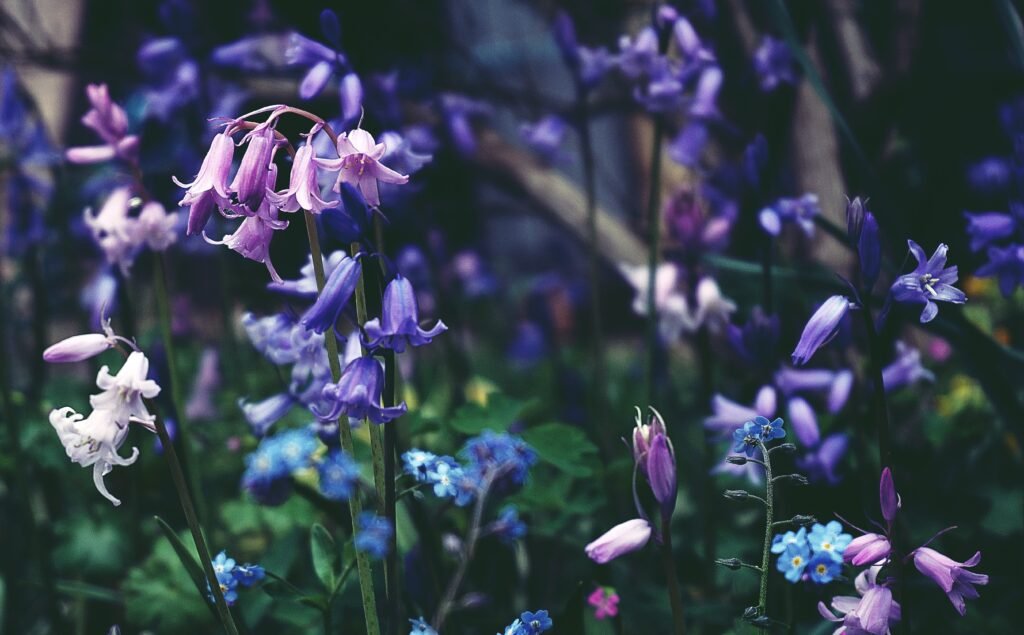Bluebell is a beautiful flowering plant that is known for its delicate blue blossoms and slender green leaves. It is native to Europe and blooms in the spring, adding a pop of color to gardens and woodlands. Bluebells are often found in shaded areas and are a favorite among pollinators such as bees and butterflies.
About Bluebell:
Bluebell is a beautiful plant that comes in different types, including English Bluebell, Spanish Bluebell, and hybrid Bluebell. Each type has its own unique characteristics and growth habits.
The Bluebell has a perennial life cycle and blooms in the spring. It offers a breathtaking display of blue, purple, or white flowers that attract bees, butterflies, and hummingbirds.
Characteristics:
Bluebells are easy to grow and maintain, making them a popular choice for gardeners. While they are not edible, they have a delicate fragrance that adds a pleasant scent to the garden. Bluebells also have an extended bloom time, providing color and beauty for several weeks.
This plant is often used as an ornamental in borders, rock gardens, and woodland areas. It is known for its fast growth, quickly filling in empty spaces with its vibrant foliage and flowers.
Growing Conditions:
Bluebells prefer growing conditions that include well-draining soil and partial shade to full shade exposure. They are adaptable to a wide range of soil types and can thrive in both moist and dry conditions.
Resistance:
Bluebells are resistant to deer and rabbit damage, making them a great choice for gardens prone to these pests. They are also generally resistant to diseases such as rust, fusarium wilt, downy mildew, and powdery mildew.
| Season | Depth | Height | Spacing | US Hardiness Zone |
|---|---|---|---|---|
| Spring | 2 to 4 inches | 12 to 24 inches | 4 to 6 inches | 3 to 7 |
Plant Care Instructions
Light Requirement
Bluebells prefer partial shade to full shade. They can tolerate some sunlight, but too much direct sun can cause their delicate blooms to wilt.
Water Need
Bluebells prefer consistently moist soil. Water them regularly, especially during dry spells. However, be careful not to overwater as it can lead to root rot.
Fertilizer
Bluebells do not typically require fertilization. However, if you feel the need to fertilize, use a balanced organic fertilizer such as compost or well-rotted manure. Avoid using synthetic fertilizers.
Pruning
After the flowers have finished blooming, you can deadhead the spent blooms to encourage new growth. However, it is important not to prune the foliage until it has fully died back in late spring, as the leaves provide energy for the bulbs to grow.
Toxicity
Bluebells are considered toxic if ingested, causing symptoms such as nausea and vomiting. Keep them away from children and pets.
Common Issues
Common issues with bluebells include fungal diseases such as powdery mildew and crown rot. Avoid overwatering and ensure good air circulation around the plants to prevent these problems. Pests such as slugs and snails can also be a nuisance, so take measures to protect your bluebells from these critters.
Culinary Benefits:
- Bluebells can be used in culinary creations to add a touch of elegance and flavor. The flowers can be used as a garnish on cakes, salads, and other dishes.
- The petals of bluebells are edible and can be used to make syrups, jams, and infused oils.
- Bluebells can also be used to make teas and refreshing beverages.
Medicinal Benefits:
- Bluebells have been used in traditional medicine for their diuretic and expectorant properties. They can help in promoting urine production and relieving respiratory congestion.
- Bluebell extracts have been used to treat coughs, colds, and bronchitis.
- They are also believed to have anti-inflammatory properties and can be used to alleviate joint pain and inflammation.
- Bluebells may have antioxidant properties and can help in boosting the immune system.
Companion Plants for Bluebells:
- Geraniums: These colorful flowers complement the delicate bluebells and create an eye-catching display.
- Daffodils: The bright yellow blooms of daffodils contrast beautifully with the bluebells, adding depth to your garden.
- Hostas: The large leaves of hostas provide a lush backdrop for the delicate bluebell flowers, creating a stunning visual effect.
- Lily of the Valley: This fragrant flower not only complements the bluebells but also attracts pollinators like bees and butterflies.

